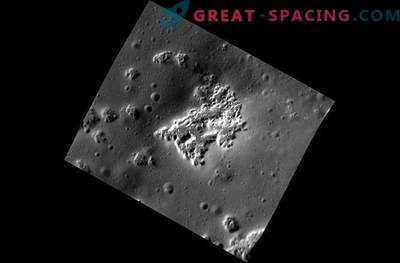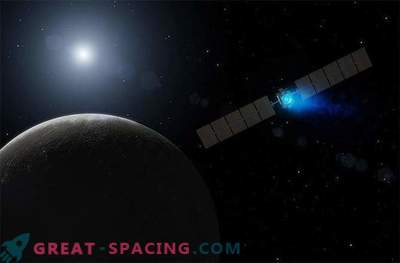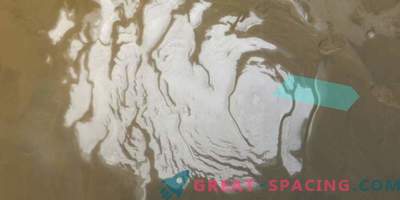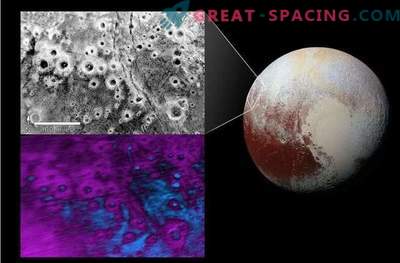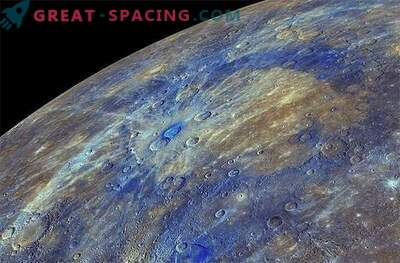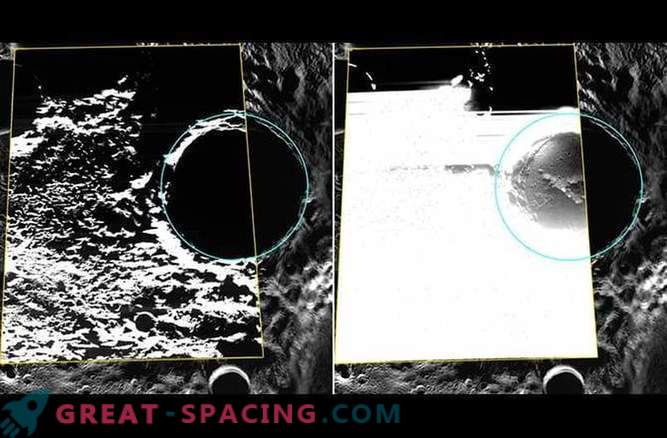
For the first time, Earth received photographs of water ice near the north pole of Mercury, which can tell a lot.
Samples collected by NASA's MESSENGER spacecraft suggest that the ice hiding on the polar craters of Mercury was delivered there in the recent past and perhaps even this process continues.
More than 20 years ago, signs of water ice near the North and South Poles of Mercury were first observed on the basis of radar images from the Earth. This was a real surprise for astronomers, given that the surface temperature of Mercury may exceed 800 degrees Fahrenheit (427 degrees Celsius).
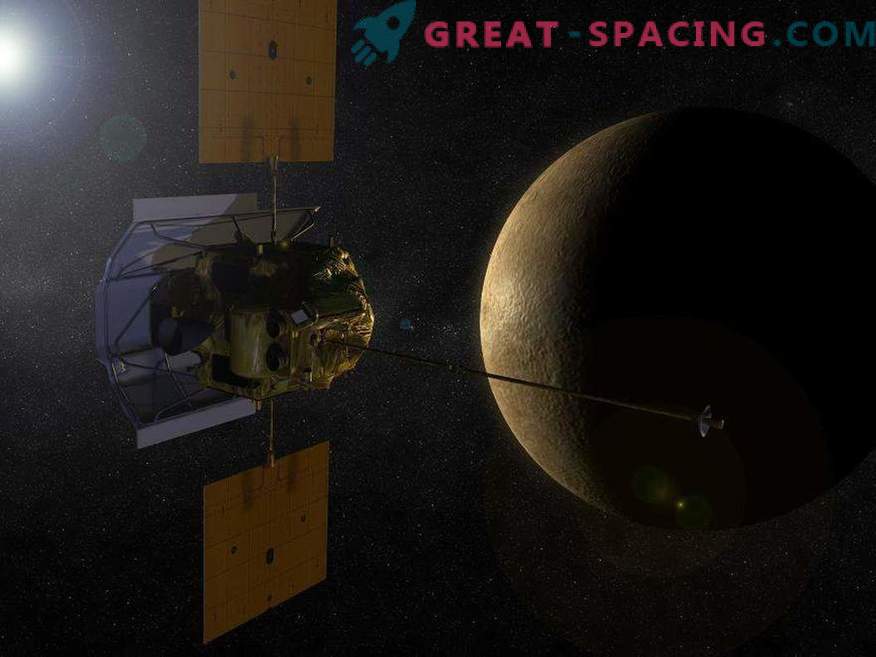
Artistic vision of the spacecraft Messenger flying up to Mercury.
At the end of 2012, images made by the MESSENGER spacecraft confirmed this hypothesis by opening the ice in the constantly darkened craters near the north pole of the planet. Scientists from the MESSENGER mission announced the discovery only after they compared the results of thermal modeling analyzes with data collected by the probe's hydrogen-neutron spectrometer and its laser altimeter, which measured the reflection coefficient of the deposits.
And now the MESSENGER team received for the first time an optical-light image of ice, taking advantage of a small amount of sunlight scattered from the walls of craters.
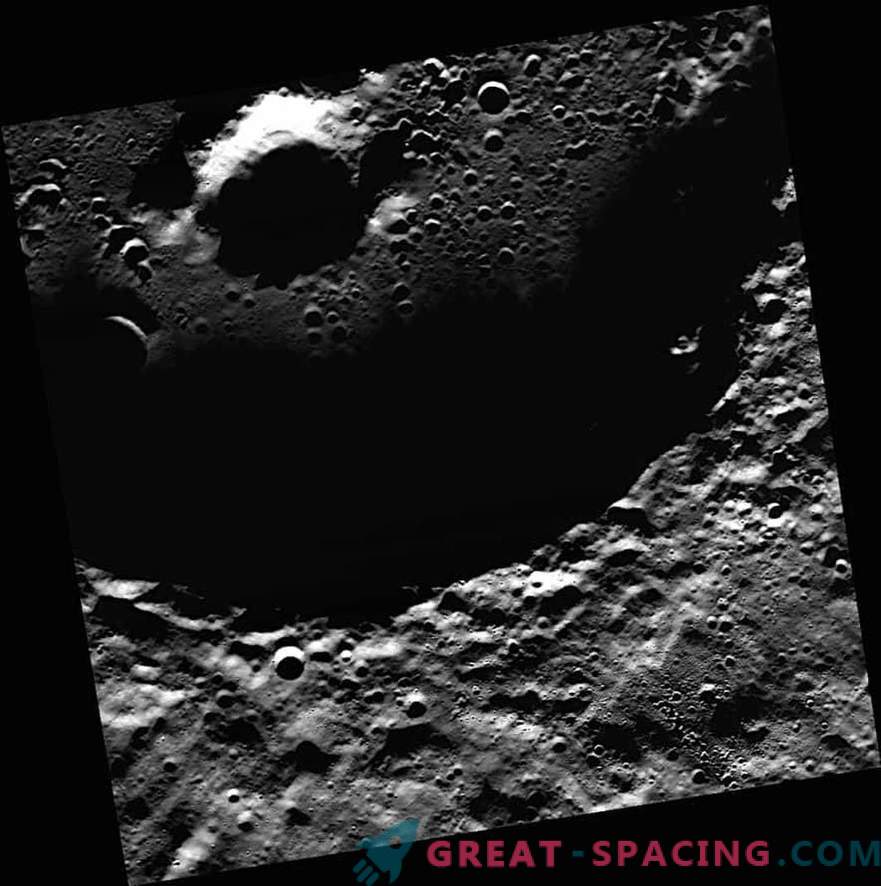
View of the Prokofiev crater on Mercury. This is the largest crater on the north pole of the planet, where there is “radar” material hinting at deposits of ice. “You can learn a lot by studying these deposits,” says lead author Nancy Shabo.
For example, the texture of ice at the bottom of the Prokofiev crater, 70 miles (113 kilometers) wide, suggests that this material got there relatively recently, and not billions of years ago, the researchers say.
Images of other craters confirm this view. They show dark deposits that are believed to have been frozen by an organically rich material covering ice in some areas, with sharp boundaries between two different types of materials.
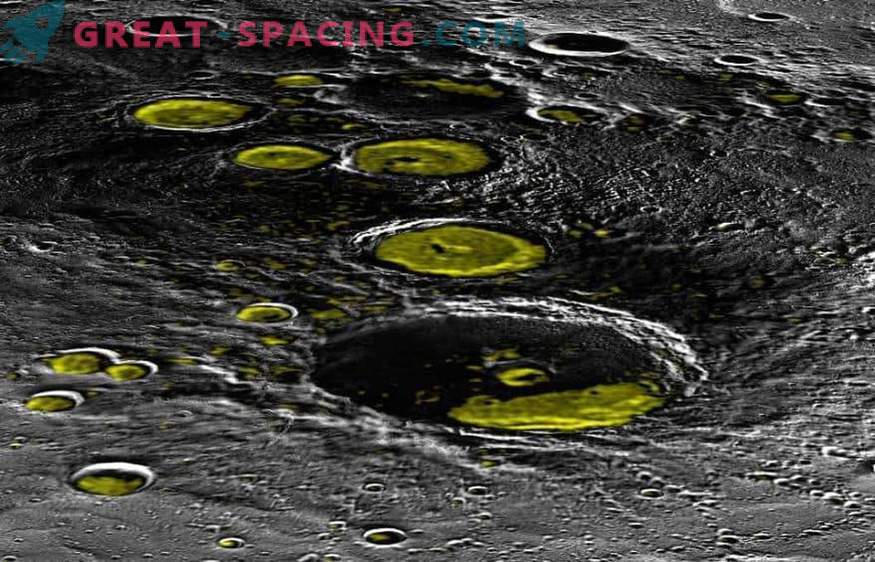
A view of the crater North Pole of Mercury showing the presence of ice (yellow).
"This result was a bit surprising, because such sharp boundaries show that the volatile substances of the poles of Mercury are geologically young compared to the material exposed on the craters," said Shabo.
Our Moon also stores water ice inside darkened polar craters, but its origin may differ from what is on Mercury, the researchers say. It can pro
The moon of the Earth also carries water ice inside the constantly shaded polar craters, but its deposits differ from those on Mercury, the researchers say. This may be because the ice of Mercury was delivered very recently.
